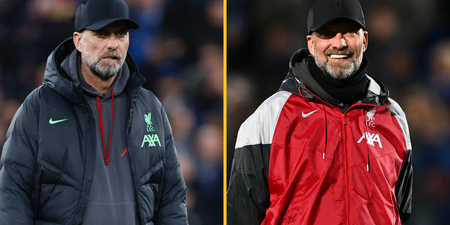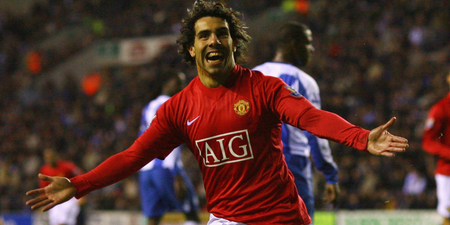A Glenn Whelan, commonly abbreviated to ‘Whelo’, is a rare endangered species of odd-toed ungulates in the family Centraldefensivemidfieldcloggae, which were once numerous across much of Great Britain and Ireland but have now, sadly, all but died out.
Indeed, there is now only one known Glenn Whelan remaining in the wild. The last major confirmed sightings of the Whelo were in central Birmingham, where it was happily and steadily roaming around the Witton district of the city and feeding on the luscious grasses of Aston Hall and Villa Park. In fact, it was not uncommon for local households to wake up on a Monday morning, open the curtains and find the Whelo dozing in their back garden or slowly running around after the dog muttering ‘Come here ya wee bollocks ya’, such is its friendly nature.
It now appears that the Whelo has migrated north, with some speculating that it has even travelled as far as the Gorgie Area of Edinburgh in search of food, shelter and above all else regular playing time as the holding midfielder in a defensively-minded 4-5-1. The sightings, however, have become far more infrequent, leading some to worry about the current status of the animal.
Here’s a quick fact file of everything you need to know about the Whelo.
 The Whelo engaging in an aggressive butting ritual to display its dominance over a potential rival.
The Whelo engaging in an aggressive butting ritual to display its dominance over a potential rival. Whelo Facts
Lifespan: Seemingly endless. At 91 caps for the Republic of Ireland the Whelo has far outlasted what scientists had previously thought possible for a player of his ability.
Height: 5 foot 11 if it stands bolt upright and puffs its chest out. Which it does.
Mass: Unknown.
Speed: Literally 4 km/h and only ever 4 km/h regardless of the situation.
Natural Predators: Any player that can run quicker than the above, or do a stepover.
Diet: Feasts heavily on grass, chewing gum (Wrigley’s Doublemint sticks) and cynical yellow cards for hauling down counter-attacks.
Ecology: Spends its time searching for watering and grazing areas. Rests on hot days.
 The Whelo visibly apprehensive as it senses danger from the surrounding herd
The Whelo visibly apprehensive as it senses danger from the surrounding herdOther Behaviour: Stomps about the pitch authoritatively but typically extremely cautious of even venturing beyond the halfway line. Some observers of the Whelo have noted that it ‘keeps things ticking over’, ‘oozes class’ (worrying medically, Whelo’s shouldn’t ‘ooze’) and is a ‘tidy’ creature. Others have been baffled by its behaviour, arguing that it is still unclear exactly what Glenn Whelan’s purpose is and, more startlingly, whether he actually does anything at all.
Communication: The Glenn Whelan makes a wide variety of vocalisations. At least 10 distinct vocalisations have been identified: snorting, honking, bleating, roaring, squeak-panting, moo-grunting, shrieking, groaning, rumbling and humphing.
All were heard during Ireland’s recent European Qualifying campaign, particularly during the 0-0 away draw against Georgia where the Whelo would often, somehow, make all of the above sounds at once, before then telling the referee to ‘fuck off’ and calling him an ‘eejit’ under his breath.
Reproduction: Don’t want to go into the details of this, to be honest.
Known Threats: As well as its natural predators, which are numerous, the Whelo’s main threat is the high-tempo, high-pressing brand of football that has spread like wildfire throughout the entirety of civilised Europe. Hence the animal’s retreat to Scotland.
Had it stayed in Birmingham it would have been hunted and captured by the Premier League’s most notorious poachers, Pep Guardiola and Jürgen Klopp, whose dynamic front-threes would have overwhelmed and consumed the ageing beast like a pack of hyenas seizing upon a wounded antelope.
 The Whelo gleefully scything down an opponent in the wild
The Whelo gleefully scything down an opponent in the wild And again
And againConservation: Fortunately, conservation efforts for the Whelo have been incredibly effective thus far. Under the care of renowned zoologists Steve Bruce, Martin O’Neill, and now Mick McCarthy the animal has been shielded by overtly negative, reductive football tactics, allowing it to ‘slot in’ a protected three-man midfield. (Because players like Glenn Whelan can only ever ‘slot’.)
This enclosure, bereft of any creativity or flair but packed full of bodies, acts as a sanctuary for the Whelo, leaving it free to shuttle from side-to-side and consume its normal diet of grass, gum and right-on-the-cusp-of-a-straight-red yellows.
All three managers have come under criticism for prioritising the species at the expense of other more valuable creatures, you know, due to it being a complete goner anyway. Even so, they have also managed to evade more substantial examination with spin that would make most politicians blush. Each has argued that Whelo must be played to ‘shield the back four’ – as though that is the thing in danger – when, in actuality, it is the Whelo that is being protected by the younger, fitter, more technical and more athletic players around him.
Despite the debate over whether the Whelo should quietly be put out of its misery, or packed off to an enclosure at Dudley Zoo, the warrior-like characteristics of the animal have long been heralded. It simply doesn’t feel pain and will continue trudging around, drenched in sweat, even as it is badly injured and verging on the brink of complete exhaustion. Why does it behave like this? The only reasonable answer zoologists have been able to give is that the Whelo does so ‘For the cause’. That cause is almost always an uninspiring 1-1 draw with Denmark, but the Whelo will fucking do it anyway as it has the largest heart in the animal kingdom.
Because of this, the Glenn Whelan has reached a cherished status similar to the Snow Leopard. Or the Northern Hairy Nosed Wombat. The Yangtze Finless Porpoise. The Leatherback Sea Turtle. Sightings of him continue to fill the hearts and inspire a nation: Yes, you too could become a moderately successfully footballer with 300-odd appearances for Stoke City if only you set to your mind to it.
It is for that the Whelo will be remembered, if a belated extinction does ever come.
Life as a designer at @JOEmediaUK pic.twitter.com/68Rw3VfdPo
— Tom Langley (@tomoslangley) November 19, 2019
(You’ll just have to imagine it, I guess)





















































